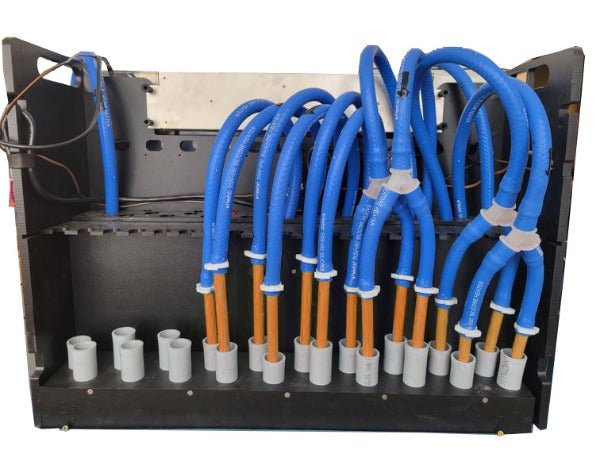As the world continues to grapple with the effects of climate change and the possibility of an economic crash, it is becoming increasingly important for individuals to take steps to ensure their survival and well-being. In this blog, we will discuss how to survive an economic crash combined with climate change by focusing on the following points:
- Get out of debt
- Set up your life to minimize payments and expenses
- Grow food
- Set up a greenhouse to get better control of temperature and water while growing food
- Try to minimize the risk of fire in and around your house
- Have some long-term food storage
- Make your house easier to heat
- Build as much community as you can with your friends and neighbors
Get Out of Debt
The first step in surviving an economic crash is to get out of debt. Debt can be a significant burden during times of financial instability, as it can limit your ability to adapt to changing circumstances and make it more difficult to meet your basic needs. Start by creating a budget and identifying areas where you can cut back on spending. Use any extra money to pay down your debts, starting with those with the highest interest rates. If possible, consider consolidating your debts into a single, lower-interest loan to make repayment more manageable.
Set Up Your Life to Minimize Payments and Expenses
In addition to getting out of debt, it’s essential to minimize your ongoing payments and expenses. This can help you weather the storm of an economic crash and reduce your vulnerability to the impacts of climate change. Some ways to minimize payments and expenses include:
- Downsizing your home or moving to a more affordable area
- Reducing your reliance on utilities by investing in energy-efficient appliances and renewable energy sources
- Cutting back on non-essential spending, such as dining out, entertainment, and vacations
- Eliminating or reducing the use of credit cards to avoid accumulating more debt
- Consider downsizing your vehicle for both more affordability in gas and payments
Grow Food
Growing your own food can be a valuable skill during times of economic and environmental instability. Not only can it help you save money on groceries, but it can also provide you with a reliable source of fresh, nutritious produce. Start by planting a small garden with easy-to-grow vegetables, such as tomatoes, lettuce, and carrots. As you gain experience, you can expand your garden and experiment with different crops. Remember to practice sustainable gardening techniques, such as composting, crop rotation, and water conservation, to minimize your impact on the environment. This also includes fruits, berries, and mushrooms.
Set Up a Greenhouse to Get Better Control of Temperature and Water While Growing Food
A greenhouse can be an excellent investment for those looking to grow their own food during times of economic and climate uncertainty. Greenhouses provide a controlled environment for growing plants, allowing you to regulate temperature, humidity, and water levels. This can be particularly beneficial in areas prone to extreme weather events or changing climate conditions. In addition to providing a more stable environment for your plants, a greenhouse can also extend your growing season, allowing you to produce food year-round.
Try to Minimize the Risk of Fire in and Around Your House
As climate change increases the risk of wildfires, it’s essential to take steps to minimize the risk of fire in and around your home. Some ways to do this include:
- Creating a defensible space around your home by clearing away flammable vegetation and debris
- Installing fire-resistant roofing and siding materials
- Regularly cleaning and maintaining your chimney and heating system
- Storing firewood and other combustible materials at least 30 feet away from your home
- Equipping your home with smoke detectors and fire extinguishers
Have Some Long-Term Food Storage
In addition to growing your own food, it’s a good idea to have some long-term food storage on hand in case of emergencies. Stock up on non-perishable items, such as canned goods, dried beans, and grains, and store them in a cool, dry place. Be sure to rotate your food storage regularly to ensure that you’re always using the oldest items first. Having a supply of emergency food can provide you with peace of mind during times of economic and environmental uncertainty.
Make Your House Easier to Heat
As climate change leads to more extreme weather events, including colder winters, it’s essential to make your home more energy-efficient and easier to heat. Some ways to do this include:
- Insulating your walls, attic, and floors to prevent heat loss
- Sealing gaps and cracks around windows and doors to keep cold air out
- Installing energy-efficient windows and doors
- Upgrading your heating system to a more efficient model
- Using a programmable thermostat to regulate your home’s temperature
- Use in-floor heating in cement as a heat sink to hold onto heat in the winter if your power goes out.
Build as Much Community as You Can with Your Friends and Neighbors
Finally, one of the most important aspects of surviving is having a community
Not only does it make life less boring, but provides a variety of skills and talents, and supplies to draw on and share with others in your community. This can be a easy as a vegetable exchange or as complicated as ledgers kept for values as goods and services are exchanged. Although, I would recommend sharing because you care, because that what a community is truly based on.






